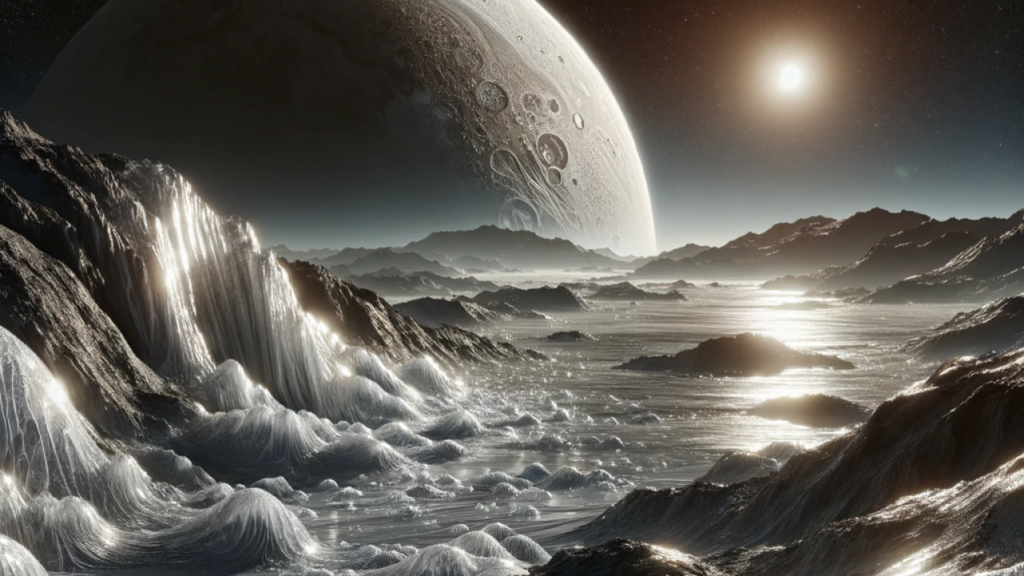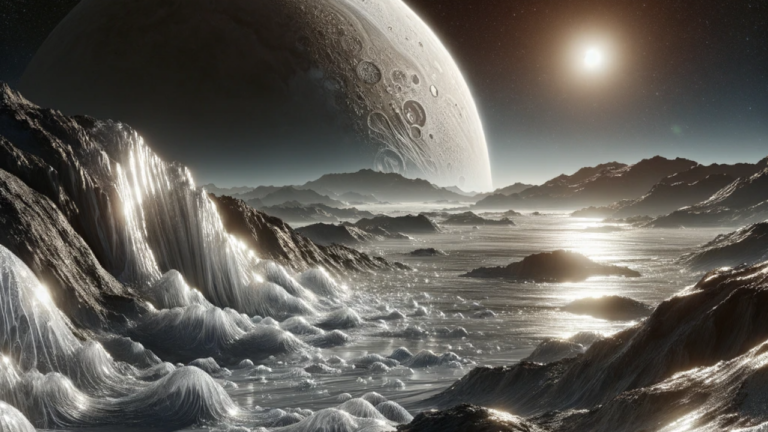Researchers suggest the possibility of life existing beneath the salt glaciers on Mercury.
These pockets could offer a more hospitable environment compared to Mercury’s harsh surface.

Icy Hot
While Mercury may appear uninhabitable, given its scorching surface temperatures reaching up to 800 degrees Fahrenheit due to its close proximity to the Sun, recent research indicates the presence of potentially life-friendly conditions in certain regions of the Solar System’s smallest planet. Scientists from the Planetary Science Institute (PSI) in Arizona have identified evidence of salt glaciers on Mercury’s surface, akin to the harsh and salt-rich environments on Earth where life manages to thrive.
According to Alexis Rodriguez, a PSI scientist and the lead author of a newly published paper in the Planetary Science Journal, specific salt compounds on Earth create habitable niches even in some of the most extreme environments, such as the arid Atacama Desert in Chile. This discovery prompts consideration of the possibility that subsurface areas on Mercury may harbor conditions more conducive to life than its inhospitable surface.
Mystery Planet
NASA’s Messenger probe, dedicated to exploring Mercury, made a groundbreaking revelation about the presence of volatile compounds on the planet, including sodium, potassium, sulfur, and chlorine. Previously, scientists believed that these compounds had been stripped away over time due to Mercury’s proximity to the Sun and its lack of a substantial atmosphere.
The researchers honed in on two specific areas for their study: Raditladi, an impact crater, and Borealis Chaos, a region in the north pole. Through their analysis, they determined that significant amounts of these volatile compounds exist in subterranean glacier-like formations, exposed when asteroids impact the planet’s surface.
According to the scientists, these salt layers originated in Mercury’s distant past when volcanoes emitted water vapors containing sodium. These vapors condensed into transient water pools, and subsequent evaporation by the Sun left behind sodium, gradually accumulating in layers over billions of years.
The team suggests that these layered salt formations could potentially contain evidence of life, akin to the harsh salt pools on Earth that can host microbial organisms.
Looking ahead, the arrival of the BepiColombo probe in 2025, a collaborative effort between Europe and Japan, holds promise for unveiling more mysteries on Mercury. Scientists eagerly anticipate the wealth of data that BepiColombo will gather, expanding our understanding of the enigmatic planet.
This article is republished from Futurism under a Creative Commons license. Read the original article.
Do not forget to share your opinion with us to provide you with the best posts !




0 Comments